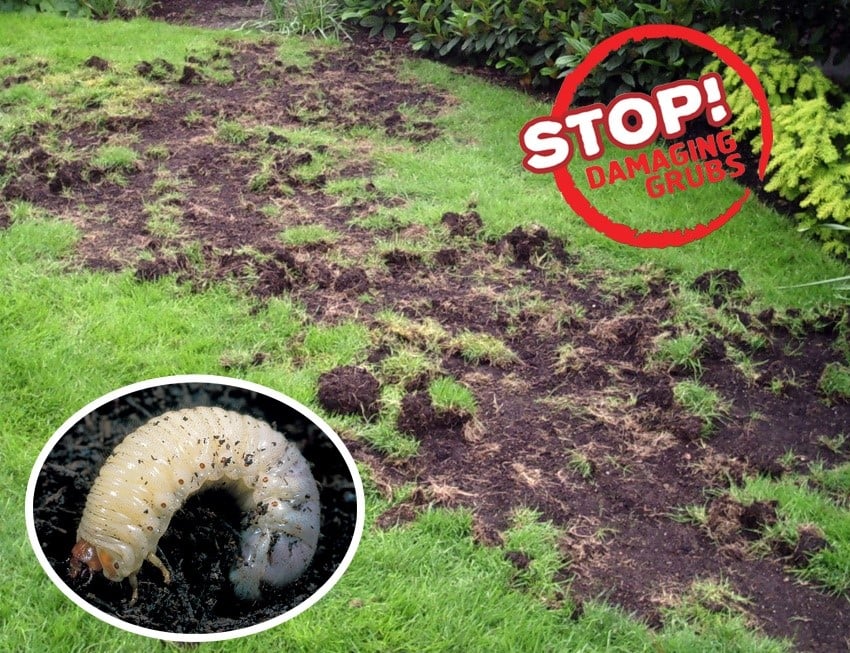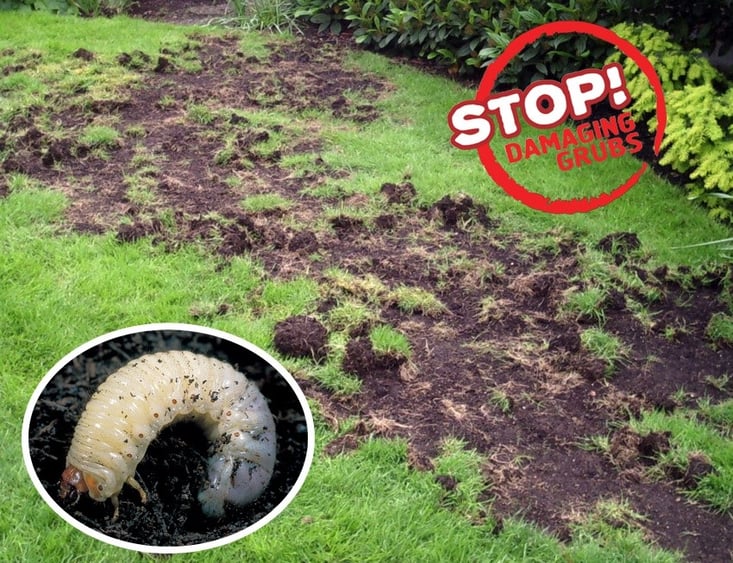3 min read
How To Reseed A Lawn Following Grub Damage
By: Thom Bourne, Nutri-Lawn Ottawa on Aug 24, 2012 12:51:00 PM


Are you finding grub damage in your lawn? Frustrated by how all your lawn care in Ottawa efforts are going to waste? Don't let grubs get you down! Adapt your Ottawa lawn care to fix the damage and prevent future problems.
What does grub damage look like?
Grubs focus their feeding around the roots of your grass. If you begin to find that your grass is drying up and dying in patches, as if it's been burned, you have grubs. You may also begin to find animals and birds come around more often in order to root around in your lawn. This is because they're hunting for the pesky insects to complete their meal.
How to prevent and treat grub infestations
Like a lot of things, prevention is the best treatment. Of course there are many things you can do once grubs have infested your lawn. However, it's important to prevent the damage before it occurs, then tackle the grub infestation with as little harm to your yard as possible. Use proper lawn care practices to promote deep grass roots, and a thick lawn. A healthy lawn will resist grub damage.
If you get a grub infestation, there are a few treatments to get rid of these pests. If they attack in the spring, it's a good idea to wait until summer to treat the next cycle. Beneficial nematodes are what we'd recommend for a grub problem. Not only are they environmentally friendly, as they are living organisms, but they are completely safe to use around your kids and your pets. These minute insect predators need moist soil to thrive and attack the grubs. Make sure you adjust your lawn care in Ottawa to suit this fighting force throughout the whole treatment.
Reseed the dead patches
The main goal of your lawn care efforts should be to bring life into a yard. Sometimes this means starting over from scratch following a grub infestation. In cases like this, reseeding is the best treatment to add to your lawn care services once damage has occurred. It's a simple process.
- Remove the dead grass. Rake the dead patches into a garbage bag or wheelbarrow and dispose of it. If you have a compost pile, you can add this without fearing disease. These bits of dead organic matter are not infected with disease; they're just no longer alive.
- Loosen the topsoil. With your rake, loose ¼ to ½ inch of topsoil to create a nice planting area for your grass seed. A good way to do this is scraping back and forth across the surface.
- Add fertilizer. The best kind to use is high-phosphorus fertilizer, such as bone meal, as it will encourage deep, healthy roots. Just rake it into the soil that has been loosened.
- Sprinkle the seed over the loosed soil. You should sprinkle the layer so that every square inch has five to seven grass seeds. If you would like to, sprinkle a bit of topsoil on top of the seed.
- Keep the area watered. You should water it about three or four times daily to ensure the water stays on the surface where the seeds are. This should be done until the seeds have sprouted roots long enough to collect their own water in the soil.
- Once the grass has reached roughly 2 inches, water once daily.
- Be careful mowing. Only begin mowing the new patches of grass once it has reached 3 or 4 inches in height. Take care to practice proper watering and mowing techniques.
For lawn care services you can trust, get your free quote from Nutri-Lawn Ottawa today!



